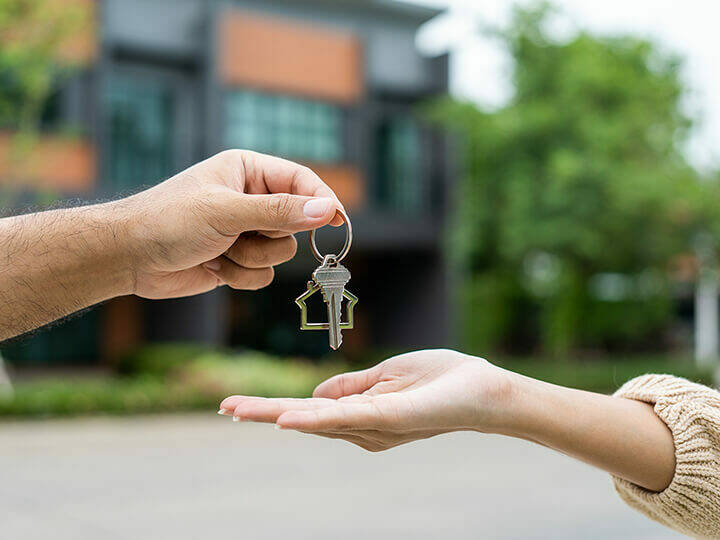Connecting Data for Better Outcomes - Taken from a presentation by Ben Jones, Head of Digital Services at Harrow Council at the GeoPlace annual conference, 11th May 2017.
Taken from a presentation by Ben Jones, Head of Digital Services at Harrow Council at the GeoPlace annual conference, 11th May 2017.
How I was converted to understand the importance of the LLPG has been key to the successful digital transformation programme that has been achieved at Harrow.
Once upon a time ago, I just saw the address as one of the many bits of information that customers gave us when they asked us to do something. I kind of saw the address look up as just an easier way of customers not having to type their address every time they filled in a form.
But thanks to our excellent LLPG custodian, who explained that the LLPG has the potential to join up all the many different sets of data that we hold across the council, I began to understand how it should be at the heart of how we digitalise the many different services that we run at Harrow. Using the term the ‘Logical Glue, I could see how it stuck all of our systems and data together.
The starting point for our digitisation programme has been the consistent use of the LLPG right across the council – if you have a system that has got addresses in it, it uses the LLPG. This covers the traditional systems like council tax, environment systems, school admissions, right through to things like adult services, all the children’s’ services systems and even special needs transport.
I must emphasise however, how essential it is to ensure that the resources are available to keep all these systems up to date and have a strong maintenance of the LLPG centrally (http://bit.ly/2wZEQY6).
How is the data connected?
One of the most obvious areas for the use of LLPG is environmental services because this really is a service that is based around location. It is also a service that creates a lot of demand from residents who just want to know what is going on around them.
Using the UPRN for that household, we retrieve all the information we have about bin collections from our waste system. We can then give an update on the street cleaning information in the area, again called directly from our back-office systems based on the UPRN. We also provide a personalised map of the area that they live so that they can get an update on the fly tipping report, tree issues and just have an overview of what is happening in their local area.
So basically, using the address and the associated UPRN, we create a personalised page for each household that based on our research, answers most of the questions that we receive from customers.
A major part of our channel migration success in Harrow has been based on the use of our authenticated channel, “The My Harrow account”.
We have over 35,000 log ins every month and we have over 90,000 residents registered and every in-borough registered account is linked to the UPRN. We use this information as the golden thread that allows us to start tying up all our different records that we have about our customers to build up the services around the customer. The use of the LLPG helps us link our customers to the correct council tax account. They can see their balance and all their council tax details that we pull from our back-office systems.
We also use it to link our residents to the school admissions data. Using this we have virtually shut our school admissions services and the contact centre and boosted channel migration and online take up through this.
We use it to link up our residents to their housing benefit service giving them all their housing benefits information via the online account. Using this we now have half of all our housing benefit claimants using our online services to transact with us.
So basically, by using the LLPG, we have managed to create a personalised portal that pulls all this information around the customer rather than the customer having to go around to different services to gather it.
What are the outcomes?
Our channel migration digitisation programme consists of several small and large programmes which have accumulated savings of £1.2 million a year in our front office, mainly through channel migration. It has saved a further £1m in back office processes mainly through automating former manual processes and roughly about another £300,000 through print and other incidental savings. And the LLPG has pretty much played a part in every single one of the projects that we now operate.
We have 25,000 forms submitted per month and the majority use the UPRN as a key to matching of data across systems from council tax to moving in and out of the borough. Again, the UPRN is key in linking all the data together, to reporting fly tipping, even down to school admissions applications. So again, it is all based around how the LLPG make sure that we tie the correct data across all our systems.
In terms of building a business case for an investment in it, it is my conclusion really that you could not build a successful transformation programme without building a strong foundation first and a corporate approach to the LLPG is at the heart of that. Without creating a strong LLPG infrastructure and the resources to maintain it, every digital project that your council or your organisation works on so is just so much harder to deliver.
You can see the slides that accompany Ben’s presentation at http://bit.ly/2gIpFMO



